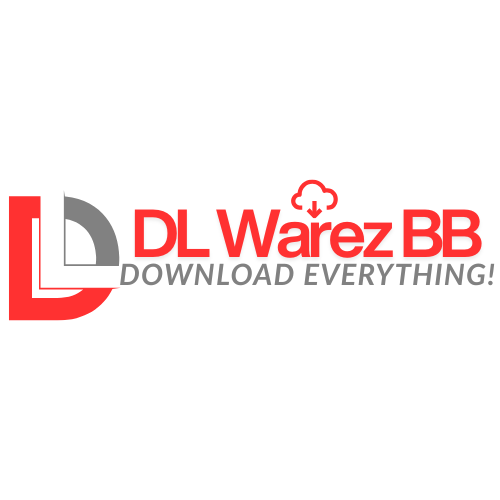11-21-2024, 08:20 AM
![[Image: 364a30e155558f6e1fd10068f1ae15a5.jpg]](https://i124.fastpic.org/big/2024/1121/a5/364a30e155558f6e1fd10068f1ae15a5.jpg)
Oracle Database 19C: Multitenant Architecture (Non-Rac)
Published 10/2024
MP4 | Video: h264, 1920x1080 | Audio: AAC, 44.1 KHz
Language: English | Size: 1.55 GB | Duration: 5h 6m
Learn Oracle 19c Multitenant (Non-RAC): manage CDBs/PDBs, user access, app containers, and perform essential admin tasks
[b]What you'll learn[/b]
Learn core concepts of Oracle Multitenant Architecture, including CDBs and PDBs, and its advantages in modern database environments.
Gain skills to create, clone, configure, and manage PDBs in Oracle 19c, enhancing database performance and resource management.
Build and manage application containers, enabling streamlined development and deployment in Oracle Multitenant.
Master administration tasks with key views and parameter initialization to efficiently manage Oracle multitenant environments.
[b]Requirements[/b]
Basic Linux Skill
Basic Oracle Skill
[b]Description[/b]
This course, "Oracle Database 19c: Multitenant Architecture (Non-RAC)," is designed to provide you with a comprehensive understanding of Oracle's Multitenant Architecture, a core feature in Oracle Database 19c*. You'll gain hands-on knowledge and practical skills for managing multitenant environments, focusing on non-RAC (Real Application Clusters) configurations.**Throughout this course, you will learn how to start and stop Oracle databases properly, ensuring smooth and reliable operations for any Oracle setup. We'll delve into user management, exploring how to create and manage users across Container Databases (CDBs) and Pluggable Databases (PDBs).Additionally, the course covers application containers, teaching you to create and manage these specialized containers for streamlined development and deployment. You'll also gain valuable insights into key administrative tasks using Oracle administration views and initialization parameters, empowering you to monitor and optimize database resources effectively.Whether you're a database administrator, developer, or IT professional, this course provides you with the essential skills needed to configure, manage, and administer Oracle's multitenant architecture in the 19c environment. By the end, you'll be equipped with the knowledge to manage Oracle multitenant databases confidently, improving efficiency and performance in your database environments. Join us and unlock the power of Oracle Database 19c's multitenant capabilities!* This course is designed for learners who already possess foundational knowledge of Oracle database administration and a solid understanding of single-tenant architecture. If you're familiar with basic database concepts, user management, and Oracle administration in a single-instance setup, you'll be well-prepared to advance into multitenant architecture. We'll build on your existing skills, focusing on the nuances and configurations specific to managing container and pluggable databases. This approach ensures that you'll quickly grasp the multitenant features and workflows unique to Oracle 19c, allowing you to confidently extend your capabilities to multitenant environments without having to start from scratch.** Based on official Oracle documentation, the course offers accurate, industry-standard guidance for managing multitenant environments in non-RAC (Real Application Clusters) configurations.
Overview
Section 1: Introduction
Lecture 1 Introduction
Section 2: Multi-Tenant (CDB) Architecture
Lecture 2 The architecture of single-tenant and multi-tenant database
Section 3: Preparing a virtual machine for practice
Lecture 3 Preparing the VM for the practical part of the course
Section 4: Create a Container Database
Lecture 4 How to Create a CDB
Lecture 5 Create a CDB with DBCA and GUI
Lecture 6 Create a CDB with DBCA in Silent Mode
Section 5: Connect to our CDB with SQLPLUS
Lecture 7 Connect to the CDB with SQLPLUS
Section 6: Extra: The structure of the Instance
Lecture 8 Instance
Section 7: Create a PDB
Lecture 9 Create a PDB with DBCA
Lecture 10 Create a PDB in SQLPLUS with Create command
Lecture 11 Opening/Closing the containers
Lecture 12 Create the first local tablespace and user
Section 8: Managing a PDB
Lecture 13 Create a Database Service
Lecture 14 Shutdown/Startup a Database
Lecture 15 Set default Tablespaces
Lecture 16 Common/Local User and Role in a Container Database
Lecture 17 Changing the global name of a PDB
Lecture 18 Initialization parameters
Lecture 19 Administration Views
Lecture 20 Backup and Restore
Section 9: Application Container
Lecture 21 What is an Application Container
Lecture 22 Create an Application Container
Lecture 23 Install an Application
Lecture 24 Create an Application PDB
Lecture 25 Upgrade an Application
Lecture 26 Create a Map Table for an Application Container
Section 10: User and Role in an Application Container
Lecture 27 Creating User and Role in an Application Container
Section 11: Cloning, Migrating and Converting
Lecture 28 Cloning a regular PDB
Lecture 29 Cloning an Application PDB
Lecture 30 Convert a regular PDB to an Application PDB
Database Administrators
![[Image: yYKsJ6fN_o.jpg]](https://images2.imgbox.com/84/ca/yYKsJ6fN_o.jpg)
![[Image: signature.png]](https://softwarez.info/images/avsg/signature.png)





